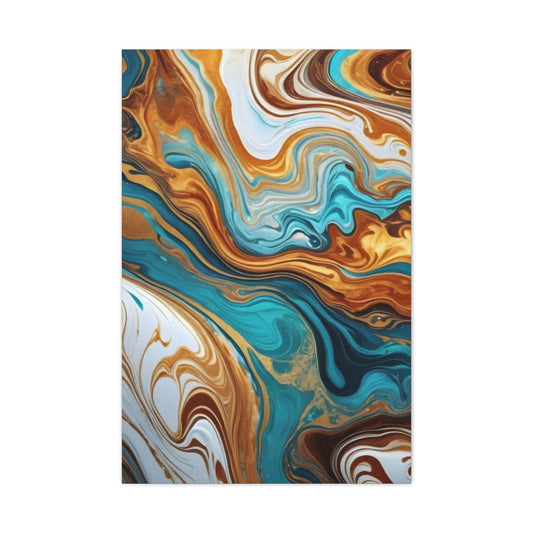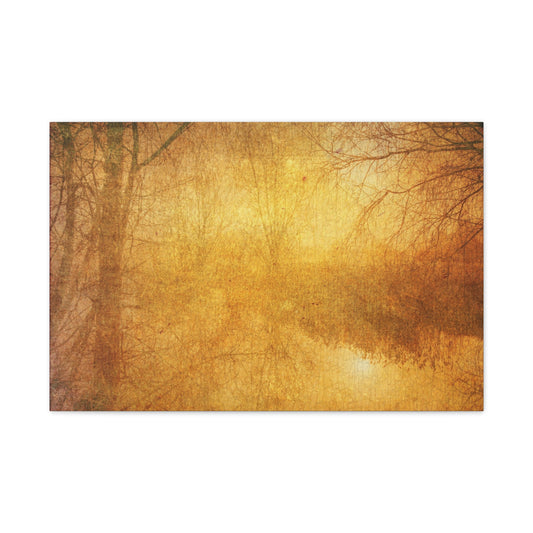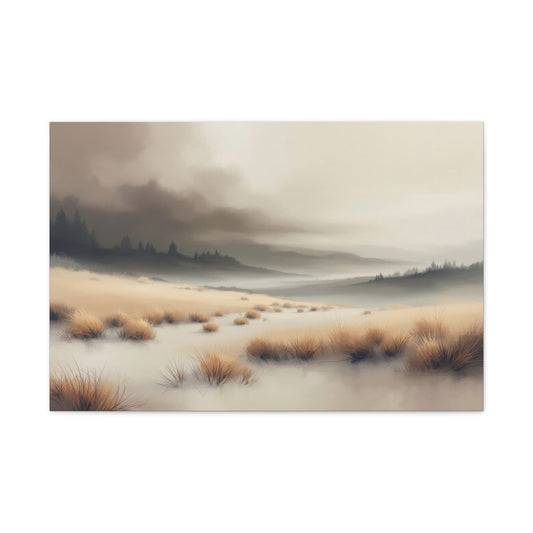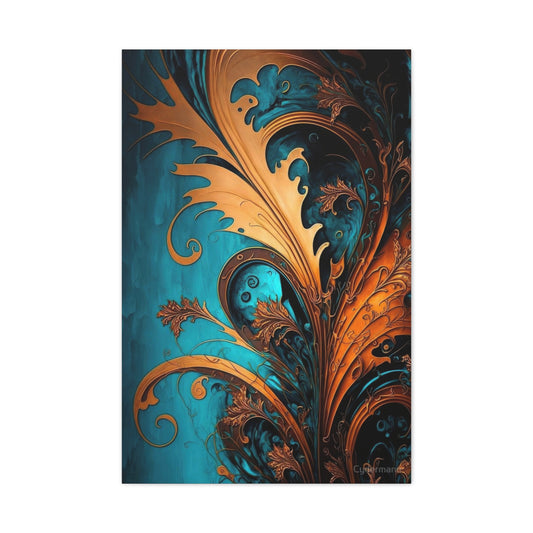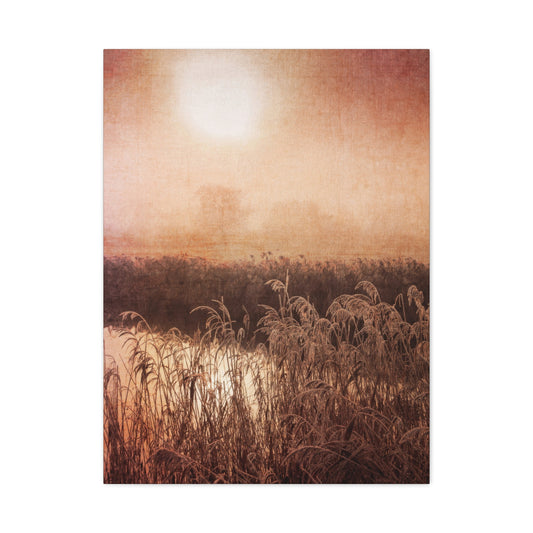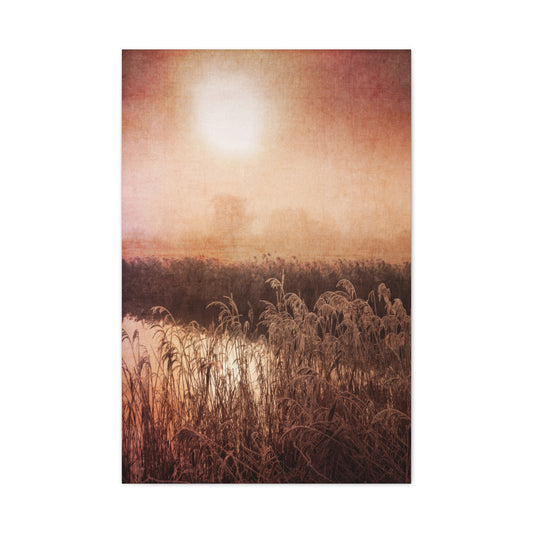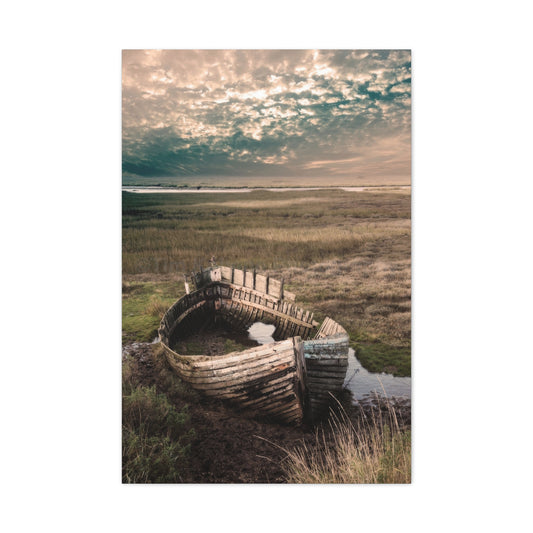Creating Timeless Oil Paintings: Essential Techniques and Materials
When it comes to creating oil paintings that will stand the test of time, both artistic skill and an understanding of the materials involved are crucial. The longevity of a painting is determined not just by the artist’s vision but by the careful selection of supplies, painting methods, and finishing techniques applied. To create works that will endure for generations, there are certain principles that artists must follow to ensure that their paintings retain their vibrancy and structural integrity. While some of these elements might seem subtle or technical, they play an indispensable role in the preservation of the artwork. The combination of careful material choices, the application process, and protective steps will ensure that oil paintings last for centuries.
Choosing the Right Support for Durability
The first and perhaps most important step in creating a lasting oil painting is selecting the right support. Over time, oil paint undergoes oxidation, which causes it to become less flexible and more prone to cracking. Therefore, one of the key factors in making sure your oil painting stays intact for generations is choosing a stable and rigid surface to paint on. The material used for the support – whether it is canvas or a panel – needs to be able to withstand fluctuations in temperature and humidity. As the environment around a painting changes, the paint and its support will contract and expand. If the support is too flexible or unstable, this natural movement can lead to damage, causing cracks or even warping.
Artists who want to create oil paintings that will endure often opt for rigid supports, such as wooden panels, which provide excellent stability. Although stretched canvas can also work, it must be prepared with care to ensure that it remains taut over time. A canvas that sags or becomes loose is vulnerable to the stresses that come from these environmental shifts. Certain fabrics, like linen or polyester, are better suited for painting on large surfaces because they are less likely to respond dramatically to changes in humidity compared to cotton. Linen, in particular, is known for its exceptional strength and durability, making it an ideal choice for painters who want their works to last for centuries.
The support you choose will also affect how the paint layers interact with the surface. When a support expands and contracts, it will move the paint film along with it. A rigid support minimizes this movement, which helps prevent cracking or distortion of the paint. Whether you choose canvas or a wood panel, the support should be chosen with longevity in mind, keeping in mind how it will hold up to the test of time and environmental changes.
Mastering the Application of Paint for Long-Term Durability
Once the support has been selected, the next step in creating a long-lasting oil painting is mastering the application of paint. One of the most important things to consider when working with oil paint is its gradual oxidation over time. As the oil paint ages, it becomes less flexible, which can lead to cracking if it is not applied correctly. While many artists instinctively paint in layers, using a direct painting technique, also known as "alla prima," can be more beneficial for creating works that stand the test of time. By painting directly in one sitting, the artist avoids the potential problems caused by layering, such as poor adhesion or tension between layers that expand and contract at different rates. This single-layer approach ensures that the paint film remains cohesive and intact.
However, if layering is the preferred method, some techniques can be employed to maintain the painting’s stability. The most important principle to follow is "fat over lean," which means that each subsequent layer of paint should contain more oil than the layer beneath it. This ensures that the layers remain flexible, accommodating the natural movement of the painting as it ages. The oil content in each layer allows the paint to contract and expand without cracking or peeling.
Another consideration when layering is the thickness of the paint. It is essential to use moderate amounts of paint. Very thick layers can take years to dry completely, and during this drying process, the paint may shrink and crack. On the other hand, thin layers of paint might not adhere well to the surface and can eventually flake off, compromising the painting's longevity. Striking the right balance between thin and thick layers is important to achieve a painting that remains intact for decades or even centuries.
High-quality oil paints are another vital element in ensuring the durability of an artwork. Artists should always seek out professional-grade oil paints that contain fewer fillers and additives. These fillers and driers, common in student-grade paints, can weaken the paint film and reduce the painting's ability to withstand the passage of time. Professional-grade oil paints generally contain fewer additives and feature high-quality pigments suspended in a strong binder such as linseed oil or walnut oil. These paints offer enhanced lightfastness, which means the colors will resist fading or shifting over time, even with prolonged exposure to light.
Protecting and Preserving Your Oil Painting
Once your oil painting is complete, it is essential to consider the final steps in preserving it for the long term. One of the most important protective measures is varnishing. A varnish serves as a protective layer on top of the paint, shielding the artwork from dust, dirt, pollutants, and the effects of light. It also enhances the vibrancy of the colors and gives the painting a more consistent sheen. However, varnishing must only be done once the painting has fully dried. Applying varnish before the paint has completely cured can cause issues because the paint will continue to interact with the varnish as it dries. This interaction could lead to cracking or yellowing of the varnish layer, which would negatively affect the painting's appearance.
Experts recommend waiting between six months to a year before varnishing, depending on the thickness of the paint and the materials used. Thicker layers of paint will take longer to dry, so it is important to test the painting's dryness before applying any varnish. Applying varnish prematurely can interfere with the natural drying process, leading to complications that could damage the painting over time. When varnishing, it is best to choose a high-quality synthetic resin varnish that is flexible and resistant to yellowing. Unlike natural resin varnishes, such as damar or mastic, synthetic resins do not become brittle with age, helping to preserve the painting's appearance for years to come.
Varnishing also offers additional protection by providing UV resistance, which helps prevent fading due to exposure to sunlight. When choosing a varnish, look for one that is specifically designed to offer UV protection. This will help ensure that the painting retains its vibrancy for generations, even if it is displayed in a well-lit area.
To further safeguard the painting, it is crucial to store it in an environment with stable temperature and humidity levels. Sudden changes in temperature or humidity can cause the paint and support to expand or contract, leading to cracks or warping. Ideally, oil paintings should be kept in a climate-controlled space, away from direct sunlight and extreme temperature fluctuations. By following these preservation guidelines, you can help ensure that your oil painting will remain as beautiful as the day it was created.
The Importance of Material Selection in Ensuring the Longevity of Oil Paintings
The durability of an oil painting is intrinsically linked to the materials chosen during its creation. Every decision an artist makes, from selecting pigments to choosing the oil bindercan have lasting effects on the longevity of the artwork. By understanding the role that different materials play, artists can make informed choices that ensure their paintings endure for generations, maintaining both their vibrancy and structural integrity.
One of the most important aspects of creating a long-lasting oil painting is the careful selection of pigments. Pigments provide the essential color to an artwork, yet not all pigments share the same degree of stability. In the past, many pigments were prone to fading or altering their color over time, resulting in artworks that lost their original vibrancy. These pigments, known as fugitive colors, are now recognized for their limited lightfastness. Modern oil paints, however, have evolved, and many contemporary pigments are far more resistant to the effects of light and time. Artists now have access to a range of high-quality, lightfast pigments that will preserve the painting's color integrity over time, ensuring that the artwork retains its depth and richness.
When selecting pigments, artists must prioritize lightfastness ratings to ensure their work will withstand the passage of time. The higher the lightfastness, the less likely a pigment is to change or fade. By incorporating these stable pigments into their creations, artists can significantly improve the longevity of their paintings. Additionally, choosing natural pigments that have been tried and tested for centuries can add historical depth and permanence to the artwork.
Another essential factor to consider is the oil binder that forms the base of the paint. Linseed oil has long been the go-to choice for many artists due to its durability. However, while linseed oil is revered for its strength, it has one drawback tendency to yellow over time. This yellowing process is more noticeable in lighter colors like whites and blues, which can alter the overall appearance of the painting. To combat this issue, artists sometimes choose alternative oils like safflower oil or poppy oil, which have a lower tendency to yellow, preserving the purity of the light colors. By carefully considering the oil binder used, artists can better control how the painting will age, maintaining its aesthetic appeal even after decades.
Grounds and Primers: Laying a Solid Foundation for Durability
In addition to selecting the right pigments and binders, the choice of ground or primer plays a critical role in the long-term health of an oil painting. The ground is the first layer applied to the painting surface, typically a canvas or panel, and it serves multiple purposes. Not only does it provide a stable foundation for the paint, but it also ensures that the paint adheres properly to the surface. A well-prepared ground will enhance the paint’s longevity, while a poor-quality ground can lead to problems like cracking, flaking, or uneven absorption of paint.
Gesso is the most commonly used primer for oil paintings, particularly on canvas. It creates a smooth surface that is ideal for painting and helps prevent the paint from soaking into the fabric, which could lead to dull or sunken areas. However, not all gesso is created equal, and the quality of the product can vary greatly. Artists need to use a high-quality gesso that strikes the right balance between absorbency and porosity. A ground that is too absorbent can cause the paint to sink in, resulting in uneven tones and loss of vibrancy. Conversely, a ground that is too non-porous may prevent the paint from adhering correctly, leading to issues like cracking or peeling in the future.
When applying the ground, artists must take care to create an even layer that covers the entire painting surface. A good ground provides a uniform foundation that will allow the oil paint to apply smoothly and adhere properly. This initial step in the painting process cannot be overlooked, as it establishes the long-term structural integrity of the artwork. Without a well-prepared ground, even the best quality oil paint will struggle to last over time.
The Application of Paint and the Role of Varnishing in Preserving Artworks
Once the proper materials have been selected and the foundation is prepared, the next step in ensuring the longevity of an oil painting is how the paint itself is applied. The technique of direct painting, where the artist works with a single layer of paint, is often considered the most stable approach. However, many artists choose to work in layers, which can add complexity, depth, and texture to the final piece. While layering can enhance the visual appeal of a painting, it must be done carefully to avoid issues like cracking or poor adhesion between the layers.
The fat-over-lean principle is critical when applying paint in layers. This principle dictates that each successive layer of paint must be richer in oil (or "fatter") than the layer beneath it. This ensures that the layers remain flexible and do not shrink or crack as they dry. Applying lean layers first allows for a stable foundation, while the fatter layers on top create a more durable surface. This careful approach helps maintain the stability of the painting and prevents long-term structural issues.
Furthermore, artists should be cautious when using a medium to modify the paint’s consistency. Excessive use of medium can dilute the pigment, weakening the paint film and compromising its strength. To preserve the quality of the paint, it is essential to use the appropriate amount of medium to achieve the desired texture without sacrificing the durability of the paint.
Once the painting is complete, the final step before presenting or storing it is varnishing. Varnishing is essential for several reasons: it protects the surface of the painting from dust, dirt, and environmental pollutants, enhances the depth of color, and provides a uniform sheen that can give the artwork a polished finish. However, the varnish should not be applied until the painting has dried thoroughly. If varnish is applied prematurely, it can interfere with the paint’s drying process, leading to cracking or yellowing over time. Depending on the thickness of the paint and the drying medium used, the drying process can take several months, so patience is necessary before applying varnish.
Varnishing also serves as a protective barrier against the elements. Over time, varnish may need to be replaced if it becomes yellowed or damaged. The advantage of varnish is that it can be safely removed and replaced without harming the underlying paint layer, allowing for restoration without compromising the integrity of the artwork.
When selecting a varnish, artists have the choice between natural and synthetic options. While natural resin varnishes have been used for centuries, synthetic varnishes like Regalrez are gaining favor due to their superior flexibility and reduced tendency to yellow or darken. Synthetic varnishes also offer greater resistance to solvents, making them easier to clean and replace without damaging the painting beneath.
Proper Storage: A Crucial Element in Painting Preservation
Finally, one of the most important aspects of preserving an oil painting's integrity is ensuring it is stored properly. Even the best materials and techniques cannot protect a painting from the effects of improper storage. Temperature and humidity fluctuations, direct sunlight, and extreme conditions can all cause significant damage to oil paintings over time.
To safeguard a painting’s longevity, it should be stored in an environment where the temperature and humidity are carefully controlled. Ideally, the painting should be kept in a room with consistent conditions, away from direct sunlight, heat sources, and areas with high humidity, such as bathrooms. Sunlight can cause pigments to fade and accelerate the aging process, while extreme temperatures can cause the paint to expand or contract, leading to cracks and other forms of damage.
Framing the painting also plays a role in its preservation. A high-quality frame not only provides aesthetic value but can also protect the edges of the canvas or panel from physical damage. Furthermore, framing helps create an air-tight barrier that can protect the painting from dust and pollutants.
The longevity of an oil painting depends on the thoughtful selection of materials, the application of painting techniques, and proper storage practices. By choosing high-quality pigments, binders, and grounds, following established painting methods, and taking care in the varnishing and storage processes, artists can create works that stand the test of time, ensuring that their creations remain intact and vibrant for generations to come.
Understanding Environmental Factors That Impact Oil Paintings' Longevity
When it comes to ensuring the longevity of oil paintings, it's not just the quality of materials and painting techniques that matter. The environment in which a painting is stored, displayed, and cared for plays a crucial role in its preservation. Even the most well-crafted paintings can deteriorate over time if exposed to unfavorable environmental conditions. In this article, we will explore how various environmental factors affect oil paintings and provide expert tips on how to care for and protect these artworks to ensure they stand the test of time.
Humidity: A Key Element in Preserving Oil Paintings
One of the most critical environmental factors influencing the longevity of an oil painting is humidity. Humidity levels can fluctuate greatly depending on the climate and seasonal changes. These fluctuations can cause the support material of the painting, such as canvas or a wooden panel, to expand and contract. This constant movement can put stress on the layers of paint, leading to cracks or even complete paint loss over time.
When exposed to high humidity, the support material absorbs moisture and swells, while in low humidity, it loses moisture and shrinks. The continuous cycle of expansion and contraction can place considerable strain on the painting, especially on the fragile paint layers. This can result in the formation of cracks, which may lead to paint flaking off or other significant damage. In extreme cases, mold can begin to grow on the painting’s surface, leading to further degradation.
To protect your artwork from the detrimental effects of fluctuating humidity, it is important to store and display oil paintings in an environment where humidity levels are controlled and remain stable. Museums and galleries often invest in state-of-the-art climate control systems to maintain a constant relative humidity of around 40% to 60%. This range is ideal for protecting paintings from the damaging effects of humidity fluctuations.
If you have an oil painting at home, you can mitigate humidity issues by placing the painting in a room that is not prone to excessive moisture, such as a basement or attic. Similarly, avoid placing paintings in areas that experience frequent changes in temperature, such as bathrooms or kitchens. Consider investing in a humidifier or dehumidifier to maintain optimal conditions for your artwork.
Temperature: The Impact of Extreme Fluctuations
Another important environmental factor to consider is temperature. Extreme temperature fluctuations can be just as harmful to an oil painting as changes in humidity. Rapid temperature changes cause the paint and canvas, or wooden panel, to expand and contract. Over time, these constant shifts can result in cracking, warping, and other forms of damage to the artwork.
Oil paintings are particularly vulnerable to temperature extremes. In hot conditions, the oils in the paint can become soft and may even begin to seep out, resulting in changes to the painting’s texture. On the other hand, cold temperatures can cause the paint to become brittle and crack. This can lead to the paint becoming detached from the support surface or cause irreversible damage to the paint layers.
To prevent temperature-related damage, it is essential to keep oil paintings in areas where the temperature remains consistent. Avoid placing paintings near sources of heat, such as radiators, fireplaces, or sunny windowsills, as the intense heat can significantly accelerate the deterioration process. Similarly, placing paintings in areas where they might be exposed to cold drafts, such as near windows or exterior walls, should be avoided.
The ideal temperature for oil paintings is generally between 65°F and 75°F (18°C to 24°C). This temperature range provides a stable environment that minimizes the risk of thermal damage. Investing in a thermostat that helps maintain a consistent temperature in the room where the painting is displayed can further help protect your artwork from the adverse effects of fluctuating temperatures.
Protecting Oil Paintings from Sunlight and UV Damage
Exposure to sunlight is one of the most significant environmental threats to oil paintings. Over time, ultraviolet (UV) light from the sun can cause pigments to fade and deteriorate, leading to a noticeable loss of color and vibrancy in the painting. Furthermore, UV rays can break down the binders and other materials in the paint, making the painting more brittle and prone to cracking.
Although natural light can enhance the visual appeal of a painting, prolonged exposure to sunlight can be detrimental to its long-term preservation. UV radiation is particularly harmful because it can penetrate the painting's surface, causing deep internal damage that is not immediately visible. As a result, it is crucial to protect oil paintings from direct sunlight, especially over extended periods.
The first step in safeguarding your painting from UV damage is to display it in a location that is shielded from direct sunlight. Ideally, choose a wall or corner of the room that doesn’t receive a lot of natural light throughout the day. If you must display a painting near a window, consider using UV-filtering glass or acrylic in the frame to block harmful rays. This protective measure can significantly reduce the risk of UV-induced fading and deterioration.
Moreover, rotating artwork regularly or using blinds and curtains to control the amount of sunlight that reaches the painting can further extend its lifespan. While sunlight can create a beautiful ambiance in a room, it’s essential to strike a balance between aesthetics and preservation to ensure that your oil paintings retain their integrity over time.
Handling and Cleaning Oil Paintings for Preservation
Proper handling and cleaning techniques are just as important as environmental factors when it comes to preserving oil paintings. One of the key risks to an oil painting’s condition is the oils, dirt, and grime that can accumulate on the surface. Handling the artwork with unprotected hands can transfer oils and dirt to the painting, leading to discoloration and eventual damage.
When handling oil paintings, always wear gloves to avoid direct contact with the surface. This simple step can prevent oils, sweat, or other substances from being transferred from your skin onto the painting, which can gradually cause deterioration. It’s also important to avoid touching the painted surface directly, as the oils from your fingers can soften the paint, leading to irreversible changes.
Dusting your paintings regularly is essential for maintaining their appearance and preventing buildup of dirt. Use a soft, natural-bristle brush to gently remove dust from the surface. Avoid using harsh materials or chemicals that could damage the painting’s varnish or paint layers. If the painting requires more thorough cleaning, consult a professional art conservator who has experience working with oil paintings.
In addition to cleaning, it is also important to inspect oil paintings regularly for signs of deterioration, such as cracking or flaking. If you notice any damage, it is best to consult a professional conservator before attempting any repairs yourself. Trying to fix a damaged painting without the proper knowledge or tools can often result in further harm.
By adopting the right handling, cleaning, and storage practices, you can ensure that your oil paintings remain in excellent condition for many years to come. These careful measures, when combined with a controlled environment, will significantly enhance the longevity of your artworks.
The Artist’s Commitment to Timeless Art
Creating oil paintings that withstand the passage of time goes beyond just following technical guidelines and selecting premium materials. An artist's dedication to preserving their work for future generations is a profound and complex process. It requires a deep understanding of both the art itself and the longevity of the materials involved. This commitment to lasting art is an integral aspect of every masterpiece. While every artist has their unique process, the one common thread is the artist’s responsibility to ensure that their work survives for centuries, regardless of trends or changing styles.
A significant part of this responsibility lies in the artist’s ability to select the right materials. While it’s true that high-quality brushes, pigments, and mediums are the foundation of any lasting piece, the artist’s attentiveness to these tools has far-reaching implications for the final result. Even seemingly small decisions, such as choosing a specific type of brush or opting for a particular oil medium, can significantly affect the overall durability of the painting. Skilled artists take time to research and understand the materials they work with, choosing products that have proven longevity and the ability to maintain their color integrity over time.
The quality of materials serves as the groundwork, but it is the artist’s technique that truly sets the foundation for longevity. It is through technique that the artist ensures a smooth and durable interaction between layers of paint, and it is through technique that potential issues such as cracking, peeling, or discoloration can be prevented. Every brushstroke and every layer is part of a larger equation, and the artist’s familiarity with the painting process enables them to make choices that reinforce the longevity of their work.
Technique and Methodology: The Key to Long-lasting Paintings
In oil painting, technique is not only about creating a visually stunning image but also about ensuring that the painting remains intact over time. An artist’s methodical approach to applying paintwhether through direct painting or layer buildingplays an essential role in how well a painting survives. While some techniques might be easier or faster, artists committed to the long-term success of their work understand that taking extra care is crucial.
Direct painting is a method where the artist applies paint directly onto the surface without intermediary steps such as underpainting or glazes. While it can be challenging for some, direct painting helps in minimizing the risks of cracking and peeling. This is because there is less chance of tension building between multiple layers, which can lead to problems with adhesion as the painting dries and ages. Choosing the right technique can make all the difference in ensuring that the painting’s structure remains sound for generations.
Layered painting is another essential technique used in oil painting. This process involves building up paint in successive layers, which not only creates depth and texture but also contributes to the overall longevity of the work. However, layering paint requires precise knowledge of how different layers will react to each other as they dry and cure. Following the traditional “fat-over-lean” principle is critical during this phase. The fat-over-lean rule ensures that each subsequent layer of paint contains more oil than the previous layer, which allows the painting to dry properly and prevents the top layers from cracking. An artist must have a thorough understanding of the paint’s properties to avoid creating imbalances that could compromise the painting’s integrity.
In addition to proper layering, the drying process itself is just as important. Oil paints take time to dry fully, and rushing this stage can have negative consequences for the long-term preservation of the work. Patience is a virtue in the creation of timeless art, and the artist must be willing to allow each layer to dry completely before adding another. This careful attention to drying time minimizes the risk of layers shifting or interacting in undesirable ways.
The Final Touches: Preservation and Care
Once the painting has dried, the final stages of varnishing and preservation are crucial to ensuring the longevity of the piece. The varnishing process, although a crucial element in protecting the work, can also introduce problems if rushed. Applying varnish to an oil painting before it is fully dry can cause long-term issues, such as cracking or clouding. Artists must take their time and make sure that the painting is completely cured before adding any protective coating. This requires discipline, as it can be tempting to rush the process for a quicker result. However, the artist's commitment to allowing the work to reach full maturity before varnishing is a sign of respect for the future of the piece.
The varnish itself serves as a protective layer, safeguarding the colors and paint from dust, dirt, and other environmental factors. It helps to protect the painting from the wear and tear of time, ensuring that the integrity of the work is preserved for decades or even centuries. The choice of varnish is important as well, as certain varnishes are more suitable for long-term protection. Selecting the appropriate varnish ensures that the painting is protected from the elements without compromising its aesthetic qualities.
In addition to varnishing, proper storage and care during the painting's drying and curing stages are crucial to preserving its quality. The artist must ensure that the painting is stored in an environment where temperature and humidity are carefully controlled. Fluctuating conditions can damage the painting, causing the paint to crack, warp, or fade. Whether the painting is drying in the studio or storage, the artist must be diligent in creating an ideal environment for the work to mature properly.
Even after the painting has dried and been varnished, its preservation does not stop there. Regular maintenance and proper storage are essential for ensuring that the artwork remains in excellent condition throughout the years. Whether it's periodic cleaning to remove dust or adjusting the framing to avoid exposure to harmful light, the artist must consider the painting’s future even after it leaves their hands. By continuing to care for the work, the artist plays a crucial role in ensuring its long-lasting beauty and stability.
The Visionary Artist: Crafting Art for the Future
The creation of timeless oil paintings is not just about following best practices; it is about understanding that what the artist creates today can live for many generations to come. The visionary artist looks beyond their immediate artistic goals, acknowledging that their work is part of a larger cultural heritage that will be passed down through the ages. The artist’s dedication to using high-quality materials, refined techniques, and proper preservation methods reflects this forward-thinking mindset.
An artist committed to creating lasting art is always aware that the choices they make today will impact the future. Every brushstroke, every decision about pigment and medium, and every moment of patience during the drying and varnishing process contribute to a piece of art that can transcend time. The artist must approach each painting with respect not only for the craft itself but for the legacy they are creating. In doing so, they ensure that their works will not only endure but will continue to inspire and captivate future generations, preserving their beauty and their meaning for centuries to come.
By embracing the technical aspects of oil painting alongside their creative vision, the artist becomes both a creator and a caretaker of timeless art. Their commitment to preserving the integrity of their work is essential for ensuring that it stands the test of time and continues to resonate long after it has been completed. Through careful technique, thoughtful material choices, and ongoing preservation, the artist ensures that their creations will remain as relevant and beautiful as they were the day they were painted, solidifying their place in the world of enduring art.











